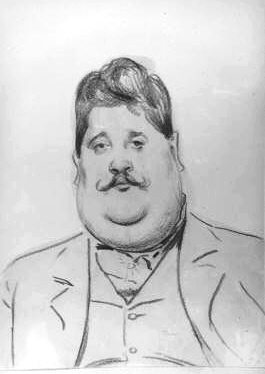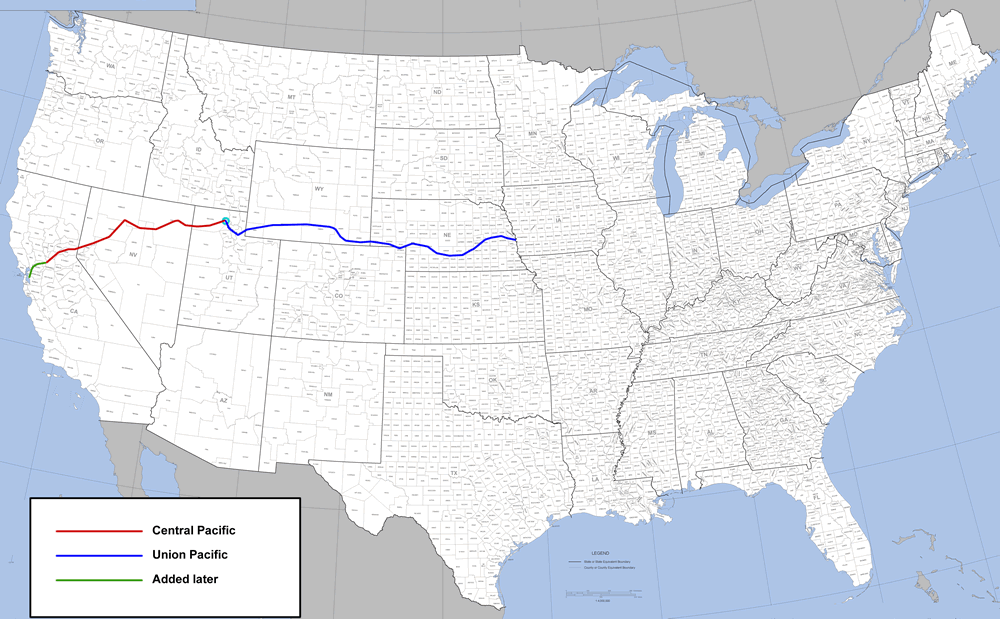|
Heinrich Lefler
Heinrich Lefler (7 November 1863, in Vienna – 14 March 1919, in Vienna) was an Austrian painter, graphic artist and stage designer. His father was the painter Franz Lefler. Life and work From 1880 to 1884, he studied at the Academy of Fine Arts Vienna under Christian Griepenkerl and, from 1884, at the Academy of Fine Arts Munich under Nikolaus Gysis and Wilhelm von Diez. In 1891, he became a member of the Society of Austrian Artists and, in 1900, was a founding member of the Hagenbund. From 1900 to 1903, he was an assistant to Anton Brioschi, the head designer at the Vienna State Opera, following which he became a professor at the Academy until 1910. While at the Vienna Opera, he designed a set for the Metropolitan Opera and shipped the pieces to New York. Besides the time spent in his formal occupations, he spent a great deal of time in Weißenbach an der Triesting with his father and his brother-in-law, Joseph Urban, a fellow scenic designer, where they painted murals on ... [...More Info...] [...Related Items...] OR: [Wikipedia] [Google] [Baidu] |
Heinrich Lefler Around 1900
Heinrich may refer to: People * Heinrich (given name), a given name (including a list of people with the name) * Heinrich (surname), a surname (including a list of people with the name) *Hetty (given name), a given name (including a list of people with the name) Places * Heinrich (crater), a lunar crater * Heinrich-Hertz-Turm, a telecommunication tower and landmark of Hamburg, Germany Other uses * Heinrich event, a climatic event during the last ice age * Heinrich (card game), a north German card game * Heinrich (farmer), participant in the German TV show a ''Farmer Wants a Wife'' * Heinrich Greif Prize, an award of the former East German government * Heinrich Heine Prize, the name of two different awards * Heinrich Mann Prize, a literary award given by the Berlin Academy of Art * Heinrich Tessenow Medal, an architecture prize established in 1963 * Heinrich Wieland Prize, an annual award in the fields of chemistry, biochemistry and physiology * Heinrich, known as Haida in Ja ... [...More Info...] [...Related Items...] OR: [Wikipedia] [Google] [Baidu] |
Joseph Urban
Joseph Urban (May 26, 1872 – July 10, 1933) was an Austrian-American architect, illustrator, and scenic designer. Life and career Joseph Urban was born on May 26, 1872, in Vienna. He received his first architectural commission at age 19 when he was selected to design the new wing of the Abdin Palace in Cairo by Tewfik Pasha. He became known around the world for his innovative use of color, his pointillist technique, and his decorative use of line. He designed buildings throughout the world from Esterhazy Castle in Hungary to the Ziegfeld Theatre in New York. Urban studied architecture at the Academy of Fine Arts Vienna under Karl von Hasenauer. In 1890, he and his brother-in-law, Heinrich Lefler, were among the founders of the Hagenbund. Urban's early work with illustrated books was inspired by Lefler and, together, they created what are considered seminal examples of children's book illustration. Urban immigrated to the United States in 1911 to become the art direc ... [...More Info...] [...Related Items...] OR: [Wikipedia] [Google] [Baidu] |
1919 Deaths
Events January * January 1 ** The Czechoslovak Legions occupy much of the self-proclaimed "free city" of Pressburg (now Bratislava), enforcing its incorporation into the new republic of Czechoslovakia. ** HMY ''Iolaire'' sinks off the coast of the Hebrides; 201 people, mostly servicemen returning home to Lewis and Harris, are killed. * January 2– 22 – Russian Civil War: The Red Army's Caspian-Caucasian Front begins the Northern Caucasus Operation against the White Army, but fails to make progress. * January 3 – The Faisal–Weizmann Agreement is signed by Emir Faisal (representing the Arab Kingdom of Hejaz) and Zionist leader Chaim Weizmann, for Arab–Jewish cooperation in the development of a Jewish homeland in Palestine, and an Arab nation in a large part of the Middle East. * January 5 – In Germany: ** Spartacist uprising in Berlin: The Marxist Spartacus League, with the newly formed Communist Party of Germany and the Independent Social ... [...More Info...] [...Related Items...] OR: [Wikipedia] [Google] [Baidu] |
1863 Births
Events January–March * January 1 – Abraham Lincoln signs the Emancipation Proclamation during the third year of the American Civil War, making the abolition of slavery in the Confederate states an official war goal. It proclaims the freedom of 3.1 million of the nation's four million slaves and immediately frees 50,000 of them, with the rest freed as Union armies advance. * January 2 – Lucius Tar Painting Master Company (''Teerfarbenfabrik Meirter Lucius''), predecessor of Hoechst, as a worldwide chemical manufacturing brand, founded in a suburb of Frankfurt am Main, Germany. * January 4 – The New Apostolic Church, a Christian and chiliastic church, is established in Hamburg, Germany. * January 7 – In the Swiss canton of Ticino, the village of Bedretto is partly destroyed and 29 killed, by an avalanche. * January 8 ** The Yorkshire County Cricket Club is founded at the Adelphi Hotel, in Sheffield, England. ** American Civil War &nd ... [...More Info...] [...Related Items...] OR: [Wikipedia] [Google] [Baidu] |
Hans Christian Andersen
Hans Christian Andersen ( , ; 2 April 1805 – 4 August 1875) was a Danish author. Although a prolific writer of plays, travelogues, novels, and poems, he is best remembered for his literary fairy tales. Andersen's fairy tales, consisting of 156 stories across nine volumes and translated into more than 125 languages, have become culturally embedded in the West's collective consciousness, readily accessible to children but presenting lessons of virtue and resilience in the face of adversity for mature readers as well. His most famous fairy tales include " The Emperor's New Clothes", " The Little Mermaid", "The Nightingale", " The Steadfast Tin Soldier", " The Red Shoes", "The Princess and the Pea", " The Snow Queen", " The Ugly Duckling", " The Little Match Girl", and " Thumbelina". His stories have inspired ballets, plays, and animated and live-action films. Early life Hans Christian Andersen was born in Odense, Denmark on 2 April 1805. He had a stepsister named Ka ... [...More Info...] [...Related Items...] OR: [Wikipedia] [Google] [Baidu] |
Felix Czeike
Felix Czeike (21 August 1926 – 23 April 2006) was an Austrian historian and popular educator. He was an author and partly also editor of numerous publications on the history of Vienna and was the director of the . His main work is the six-volume ''Historische Lexikon Wien''. Life Czeike, born in Favoriten (10th district of Vienna), studied history, geography, German studies and art history at the University of Vienna and received his doctorate in philosophy in 1950. From 1954 he worked in the Vienna City and State Archives, and in 1976 took over their management, which he held until his retirement in 1989. In 1977 he founded the Vienna branch of the Ludwig Boltzmann Gesellschaft for urban history research, which was integrated into the City and State archives, and which he headed until his death. From 1993 to 2003 he was president of the . In 1979 he was appointed associate professor at the University of Vienna, and in 1985 was awarded the title ''Hofrat'' by the Federal Presi ... [...More Info...] [...Related Items...] OR: [Wikipedia] [Google] [Baidu] |
Donaustadt
Donaustadt (; literally, Danube City; Central Bavarian: ''Donaustod'') is the 22nd district of Vienna, Austria (german: 22. Bezirk, Donaustadt). Donaustadt is the eastern district of Vienna.Statistik Austria, 2007, webpage statistik.at-23450. Wien.gv.at webpage (see below: References). Geography The Donaustadt district is situated in the northeast part of Vienna and is the largest of the districts by area, occupying about one-quarter of the Vienna city area, . It borders the 2nd District ( Leopoldstadt), the 11th District ( Simmering), and the 21st District ( Floridsdorf), as well as parts of Lower Austria. The district has a large part to the west of the Danube, Danube Island and Old Danube. In the east and north, Donaustadt shares the Marchfeld. Overall, about 59 percent of the district's territory is in green areas, making 30 percent of Vienna's green space lie in the 22nd District. By Danube regulation, in 1870-75, the territory of the present district was radica ... [...More Info...] [...Related Items...] OR: [Wikipedia] [Google] [Baidu] |
Austro-Hungarian Krone
The crown (german: Krone, hu, korona, it, Corona, pl, korona, sl, krona, sh, kruna, cz, koruna, sk, koruna, ro, coroană) was the official currency of Austria-Hungary from 1892 (when it replaced the florin as part of the adoption of the gold standard) until the dissolution of the empire in 1918. The subunit was one hundredth of the main unit, and was called a in German and a in Hungarian. Name The official name of the currency was (, pl. ) in Austria and in Hungary. The Latin form (plural ), abbreviated to on the smaller coins, was used for the coinage of the mostly German-speaking part of the empire known as Cisleithania. Currency names in other ethnic languages were also recognised and appeared on the banknotes: (pl. ) in Czech, (pl. ) in Polish, , (pl. , ) in Ukrainian, (pl. ) in Italian, (pl. ) in Slovene, (pl. ) in Croatian, , (singular and plural) in Serbian, (pl. ) in Slovak, and (pl. ) in Romanian. These terms all translate to the En ... [...More Info...] [...Related Items...] OR: [Wikipedia] [Google] [Baidu] |
Harvard
Harvard University is a private Ivy League research university in Cambridge, Massachusetts. Founded in 1636 as Harvard College and named for its first benefactor, the Puritan clergyman John Harvard, it is the oldest institution of higher learning in the United States and one of the most prestigious and highly ranked universities in the world. The university is composed of ten academic faculties plus Harvard Radcliffe Institute. The Faculty of Arts and Sciences offers study in a wide range of undergraduate and graduate academic disciplines, and other faculties offer only graduate degrees, including professional degrees. Harvard has three main campuses: the Cambridge campus centered on Harvard Yard; an adjoining campus immediately across Charles River in the Allston neighborhood of Boston; and the medical campus in Boston's Longwood Medical Area. Harvard's endowment is valued at $50.9 billion, making it the wealthiest academic institution in the world. End ... [...More Info...] [...Related Items...] OR: [Wikipedia] [Google] [Baidu] |
Max Reinhardt
Max Reinhardt (; born Maximilian Goldmann; 9 September 1873 – 30 October 1943) was an Austrian-born theatre and film director, intendant, and theatrical producer. With his innovative stage productions, he is regarded as one of the most prominent directors of German-language theatre in the early 20th century. In 1920, he established the Salzburg Festival with the performance of Hugo von Hofmannsthal's '' Jedermann''. Life and career Reinhardt was born Maximilian Goldmann in the spa town of Baden near Vienna, the son of Wilhelm Goldmann (1846–1911), a Jewish merchant from Stupava, Austro-Hungarian Monarchy, and his wife Rachel Lea Rosi "Rosa" Goldmann (''née'' Wengraf; 1851–1924). Having finished school, he began an apprenticeship at a bank, but already took acting lessons. In 1890, he gave his debut on a private stage in Vienna with the stage name ''Max Reinhardt'' (possibly after the protagonist Reinhard Werner in Theodor Storm's novella '' Immensee''). In 1893 he perf ... [...More Info...] [...Related Items...] OR: [Wikipedia] [Google] [Baidu] |
Krupp
The Krupp family (see pronunciation), a prominent 400-year-old German dynasty from Essen, is notable for its production of steel, artillery, ammunition and other armaments. The family business, known as Friedrich Krupp AG (Friedrich Krupp AG Hoesch-Krupp after acquiring Hoesch AG in 1991 and lasting until 1999), was the largest company in Europe at the beginning of the 20th century, and was the premier weapons manufacturer for Germany in both world wars. Starting from the Thirty Years' War until the end of the Second World War, it produced battleships, U-boats, tanks, howitzers, guns, utilities, and hundreds of other commodities. The dynasty began in 1587 when trader Arndt Krupp moved to Essen and joined the merchants' guild. He bought and sold real estate, and became one of the city's richest men. His descendants produced small guns during the Thirty Years' War and eventually acquired fulling mills, coal mines and an iron forge. During the Napoleonic Wars, Friedrich ... [...More Info...] [...Related Items...] OR: [Wikipedia] [Google] [Baidu] |
Carl Auer Von Welsbach
Carl Auer von Welsbach (1 September 1858 – 4 August 1929), who received the Austrian noble title of Freiherr Auer von Welsbach in 1901, was an Austrian scientist and inventor, who separated didymium into the elements neodymium and praseodymium in 1885. He was also one of three scientists to independently discover the element lutetium (which he named ''cassiopeium''), separating it from ytterbium in 1907, setting off the longest priority dispute in the history of chemistry. He had a talent not only for making scientific advances, but also for turning them into commercially successful products. His work on rare-earth elements led to the development of the ferrocerium "flints" used in modern lighters, the gas mantle that brought light to the streets of Europe in the late 19th century, and the metal-filament light bulb. He took the phrase ''plus lucis'', meaning "more light", as his motto. Early life Carl Auer was born in Vienna on 1 September 1858 to Alois Auer and his w ... [...More Info...] [...Related Items...] OR: [Wikipedia] [Google] [Baidu] |






_Max_Reinhardt.jpg)

